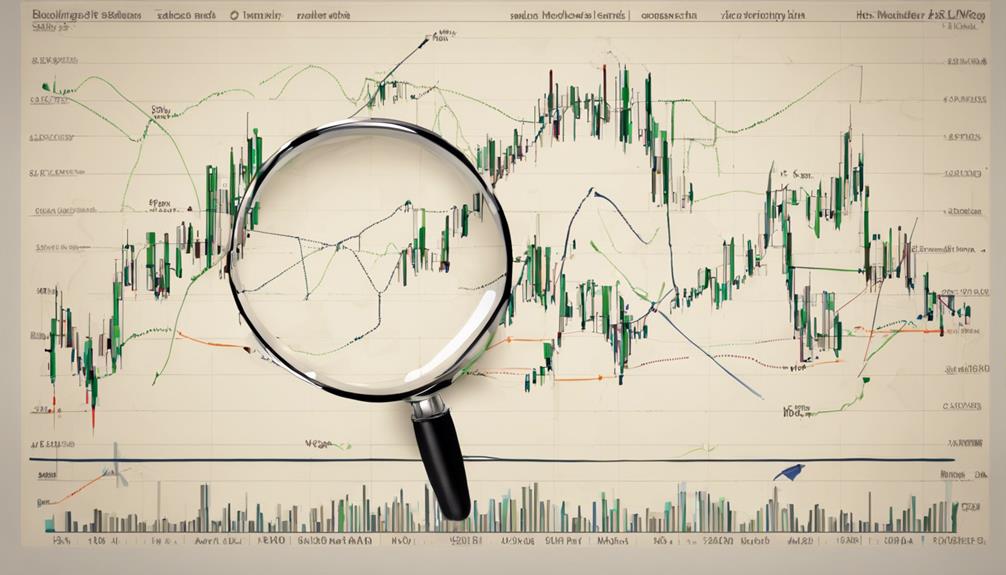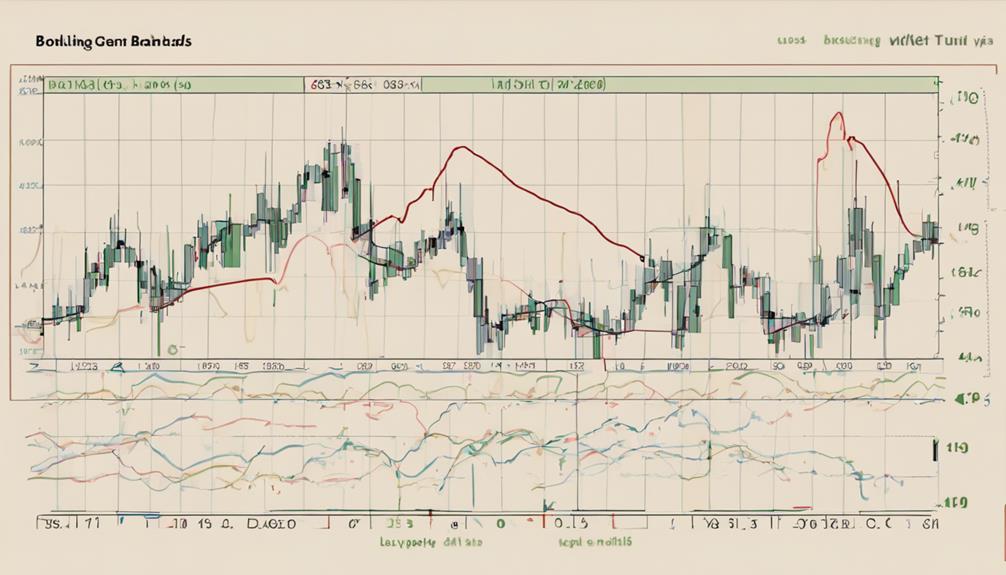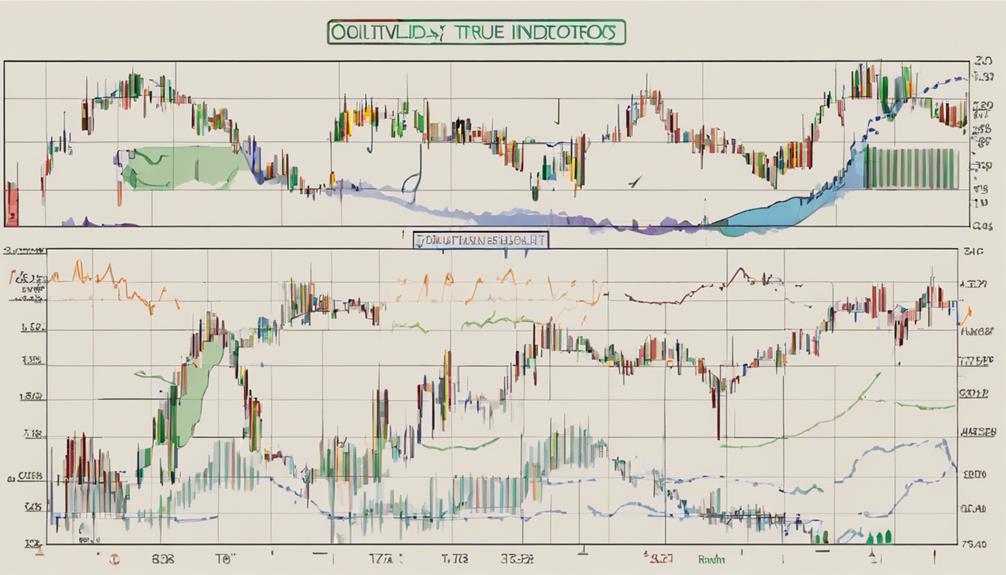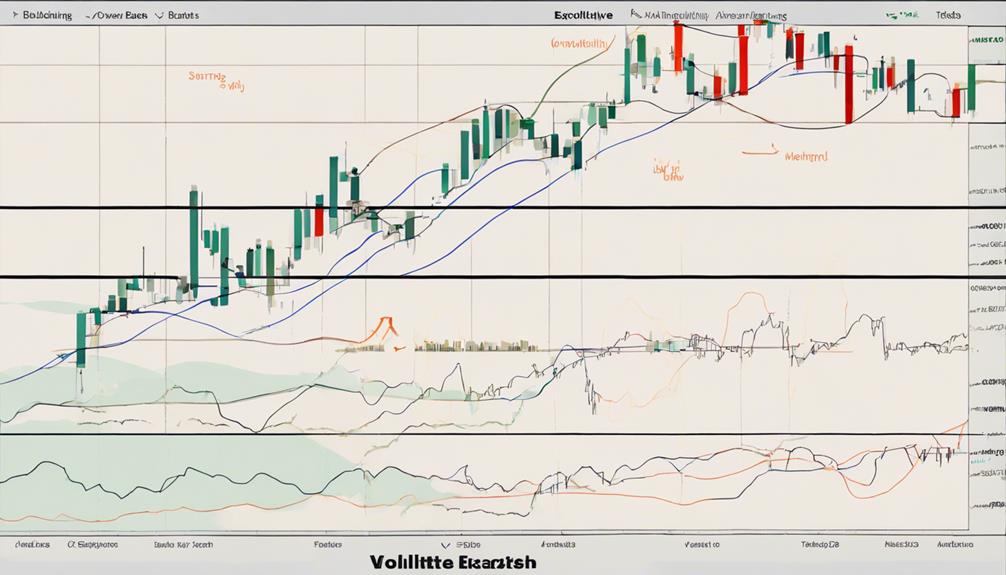Imagine a ship sailing through turbulent waters, adjusting its course with each wave. Just like that ship, navigating the financial markets requires understanding the ebb and flow of volatility indicators like Bollinger Bands.
These seven essential tips will help you grasp the intricacies of Bollinger Bands and volatility indicators, providing you with a solid foundation to make informed trading decisions.
Whether you're a seasoned trader or just starting, these insights can potentially enhance your trading strategies and outcomes.
Understanding Bollinger Bands Basics
In understanding Bollinger Bands Basics, you'll grasp the fundamental concept of how these bands are constructed and their primary purpose in market analysis. Bollinger Bands are technical indicators that consist of a middle moving average (usually a Simple Moving Average) and upper and lower bands set at two standard deviations from the SMA.
They're used to gauge volatility and identify potential price reversals. When prices touch the upper band, it may indicate overbought conditions, while touching the lower band could suggest oversold market conditions.
The concept of a squeeze in Bollinger Bands indicates low volatility, often preceding periods of increased price movement. Breakouts above or below the bands are significant as they can signal potential changes in market conditions or trends.
Importance of Volatility in Trading

Understanding the significance of volatility in trading is essential for evaluating market dynamics and making informed decisions. Volatility plays a crucial role in shaping price movements and risk levels in the market. Here are five key points to highlight its importance:
- Volatility indicates the degree of price fluctuation, influencing trading strategies.
- Bollinger Bands and other volatility indicators offer insights into potential market movements.
- High volatility signals larger price swings, while low volatility suggests more stable price action.
- Assessing volatility helps traders manage risks effectively and adjust their approaches accordingly.
- Making informed decisions based on volatility levels enables traders to capitalize on favorable price movements.
Role of Bollinger Bands in Volatility

Volatility in trading can be effectively assessed through the use of Bollinger Bands, which serve as a valuable tool for measuring and interpreting price movements within standard deviations.
Traders rely on Bollinger Bands to identify periods of high and low volatility in the market. These bands expand during volatile market conditions and contract during calmer periods, providing insights into market conditions.
The width between the bands is crucial as it indicates the level of volatility present, assisting traders in making informed trading decisions. By monitoring the Bollinger Bands, traders can anticipate potential breakouts or reversals based on the observed volatility levels, enhancing their ability to react to changing market dynamics effectively.
Types of Volatility Indicators

Utilize various types of volatility indicators to gauge market dynamics accurately and make informed trading decisions based on price fluctuations and risk assessment.
- Bollinger Bands: Show volatility through the distance between upper and lower bands around a moving average.
- Average True Range (ATR): Calculates the average price range over a specified period, reflecting market volatility.
- Moving Average: Helps identify trends and potential reversal points in price movements.
- Upper and Lower Bands: Provide insights into potential overbought or oversold conditions.
- Managing Risk: Understanding and using volatility indicators is crucial for making informed trading decisions and setting appropriate stop-loss levels.
Are Bollinger Bands and Volatility Indicators Essential for Understanding Bollinger Bands Tips?
Understanding bollinger bands trading tips is crucial for navigating the stock market. Bollinger Bands and volatility indicators are essential tools in analyzing market trends and making informed decisions. By incorporating these indicators, investors can gain valuable insights into potential price movements and adjust their strategies accordingly.
How Can I Use Bollinger Bands to Understand Volatility in Trading?
Bollinger bands effectiveness in trading lies in their ability to visually represent volatility. By measuring price volatility, traders can make informed decisions on when to buy or sell. When the bands widen, it indicates increased volatility, while narrowing bands suggest decreased volatility, allowing traders to adjust their strategies accordingly.
Effective Bollinger Bands Strategies

Enhance your trading strategy with effective approaches utilizing Bollinger Bands to capitalize on market trends and signals. Bollinger Bands are valuable technical analysis tools that help identify potential support and resistance levels in the market, aiding in recognizing buying or selling opportunities.
Combining Bollinger Bands with indicators like RSI can further enhance decision-making processes. Strategies like the Bollinger Squeeze or Double Bollinger Bands offer different ways to optimize trading outcomes.
Frequently Asked Questions
How Do You Measure Volatility With Bollinger Bands?
You measure volatility with Bollinger Bands by calculating standard deviation from a 20-day moving average. Wider bands indicate higher volatility. Breakouts above or below the bands signal volatility shifts. Monitoring helps identify low/high volatility periods for strategic decisions.
Which Indicators Work Best With Bollinger Bands?
To maximize Bollinger Bands effectiveness, incorporate Relative Strength Index (RSI) for overbought/oversold readings, Stochastic Oscillator for trend reversals, Moving Average Convergence Divergence (MACD) for trend confirmation, Volume indicators for strength analysis, and Parabolic SAR for stop-loss placement.
How Do You Read a Bollinger Band Indicator?
When reading a Bollinger Band indicator, observe how price interacts with the bands. Focus on price touching or crossing the bands for potential trading signals. Remember, Bollinger Bands gauge market volatility and potential breakouts, not price direction.
What Is the Bollinger Bands Volatility Breakout?
When experiencing a Bollinger Bands volatility breakout, the price surpasses the bands, indicating potential trend changes. Increased market volatility and strong price movements are likely. Traders view this breakout as a signal to enter or exit trades.
Conclusion
In conclusion, mastering Bollinger Bands and volatility indicators is essential for successful trading. By understanding how Bollinger Bands work and incorporating them into your strategy, you can effectively gauge market trends and make informed decisions.
Remember to combine these tools with other indicators for better accuracy. Stay focused on market movements and utilize the power of volatility indicators to enhance your trading performance.
Good luck navigating the markets with confidence and precision!


